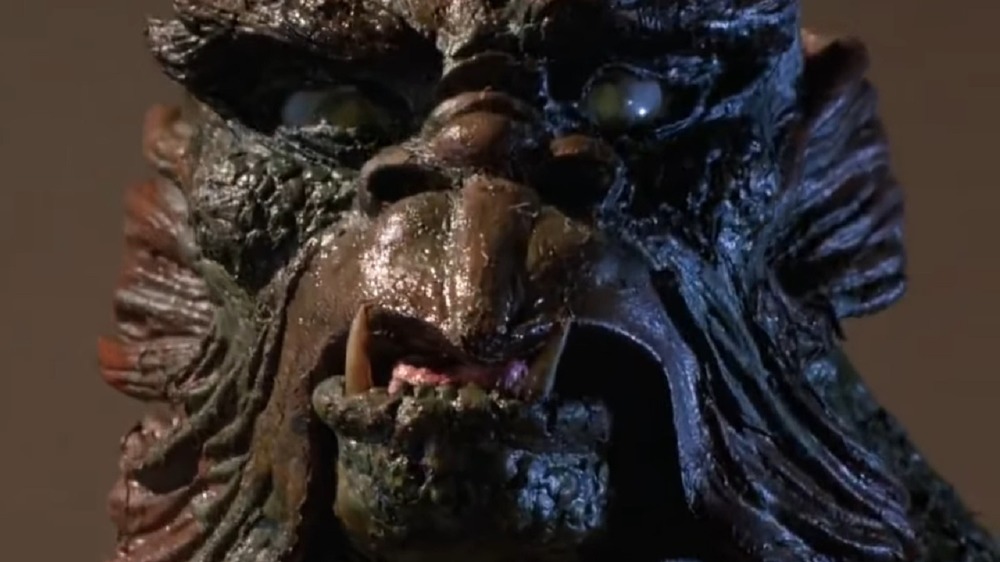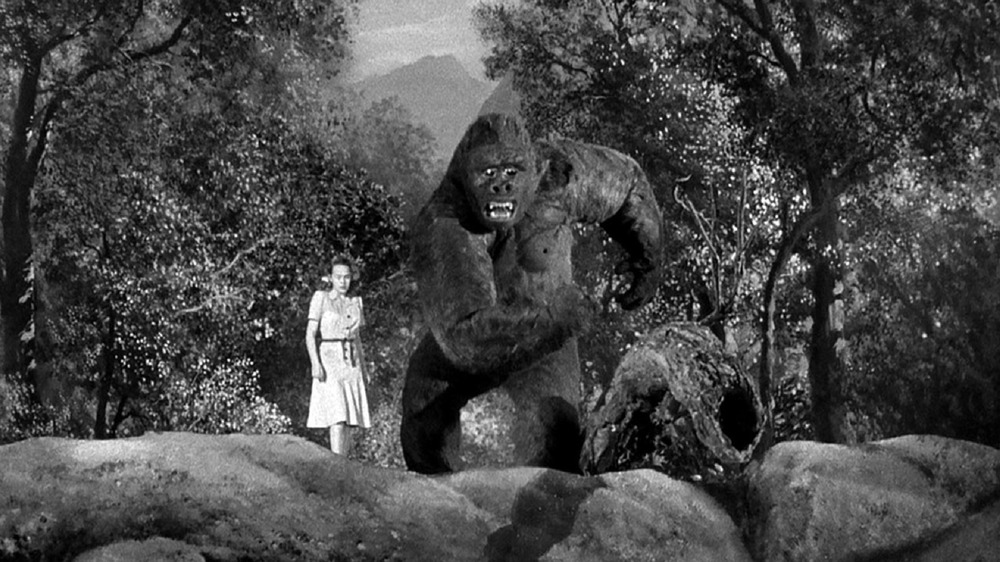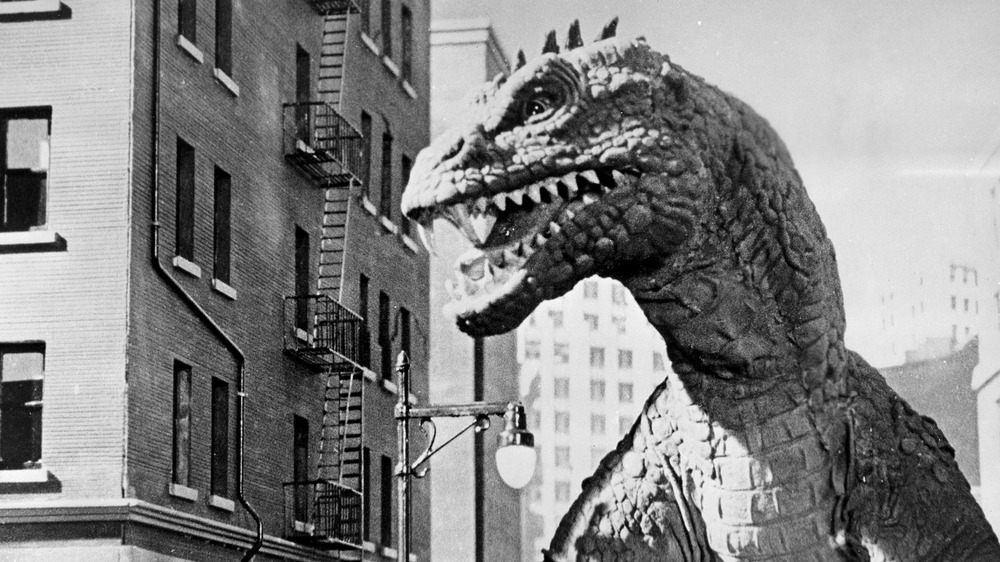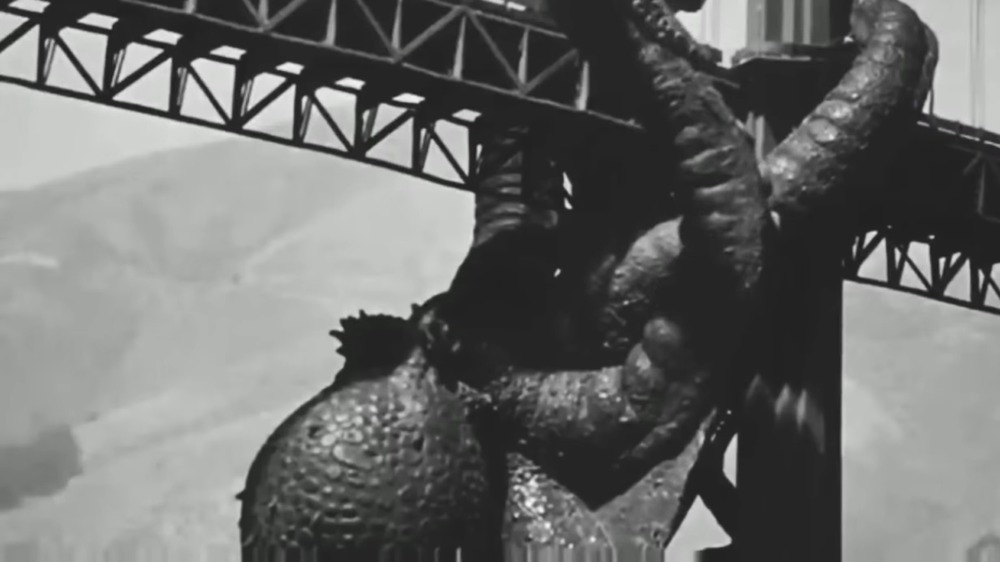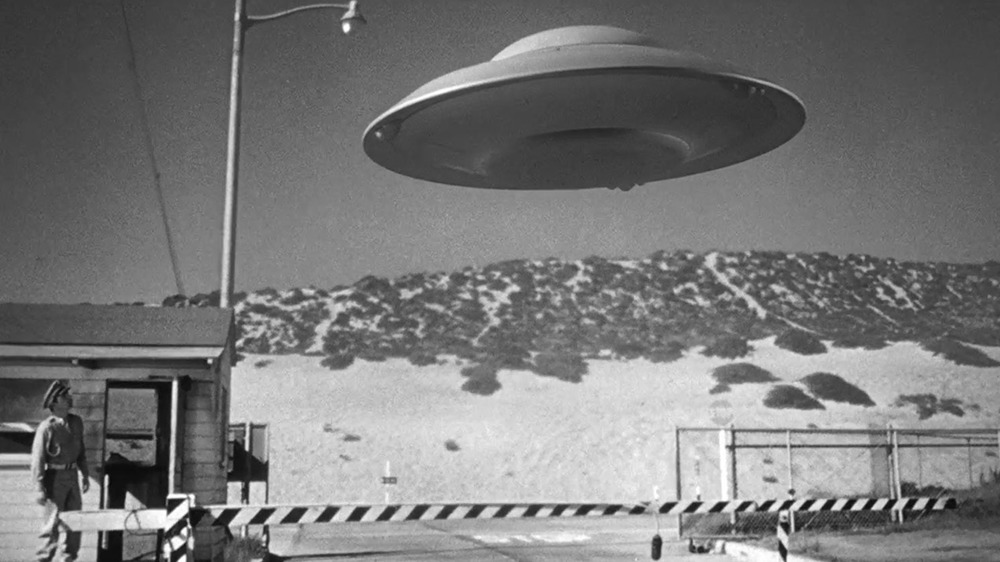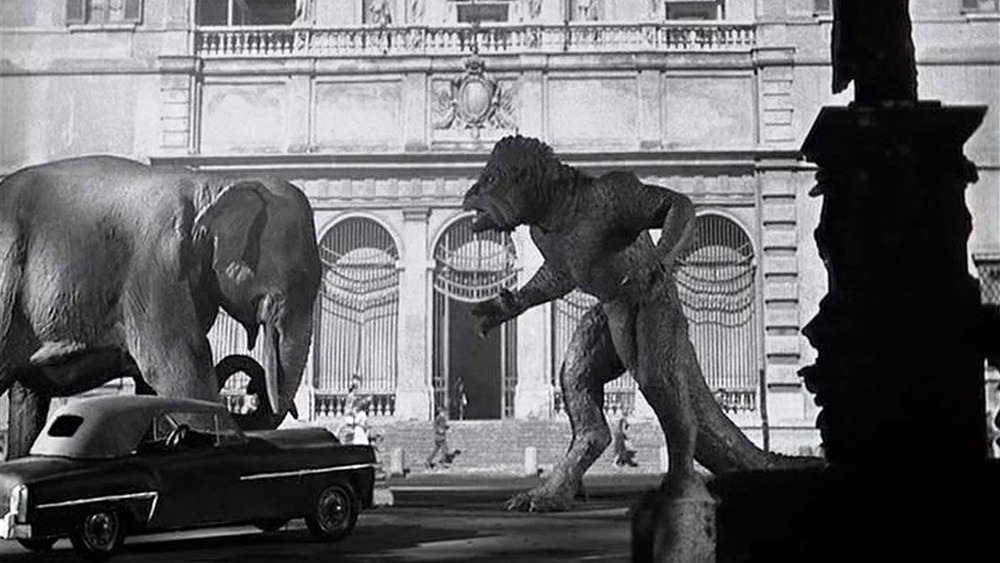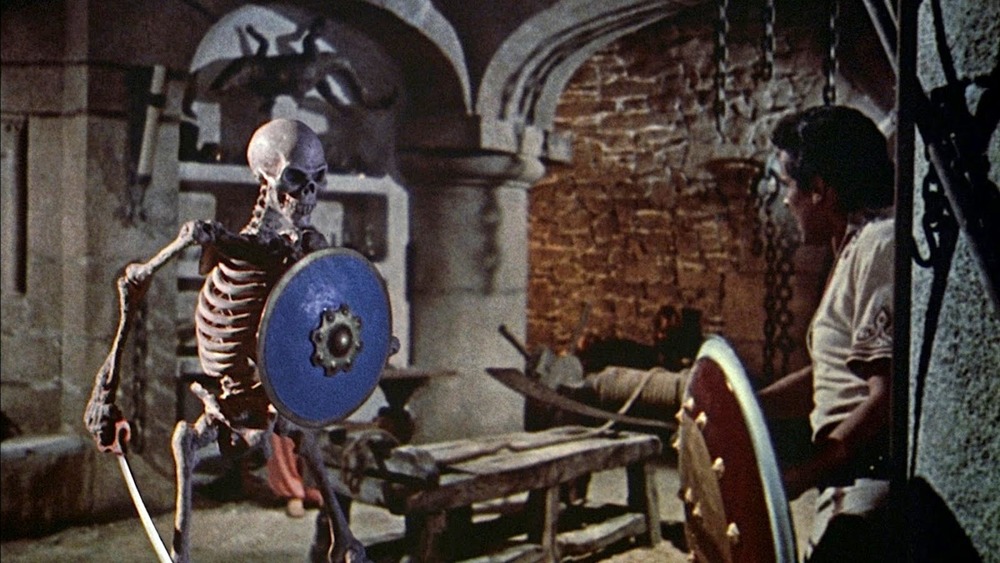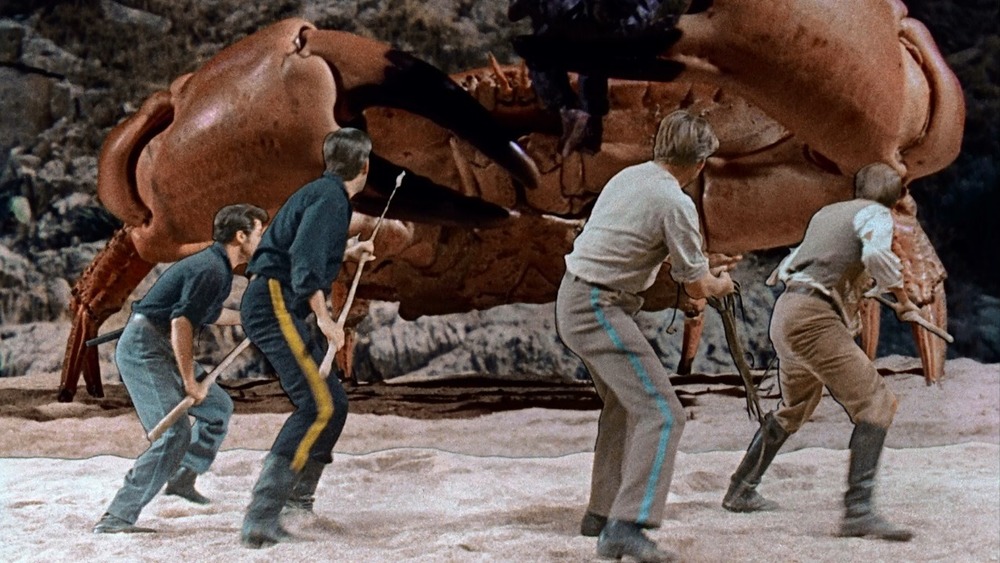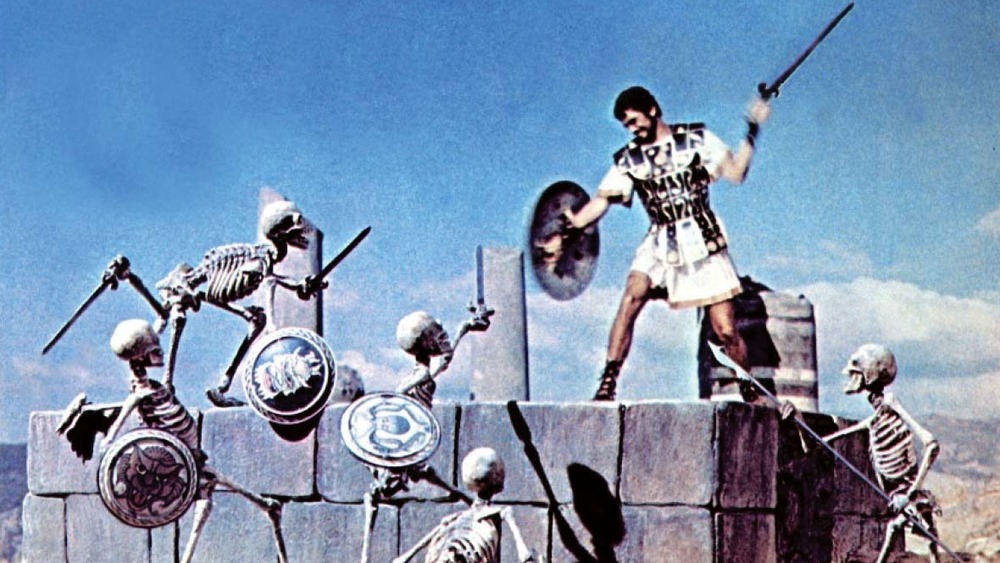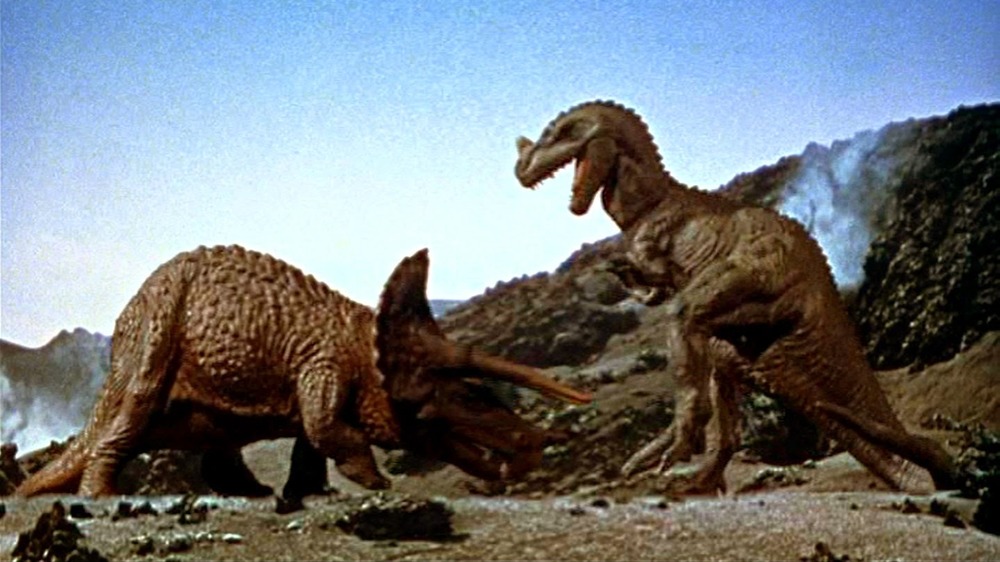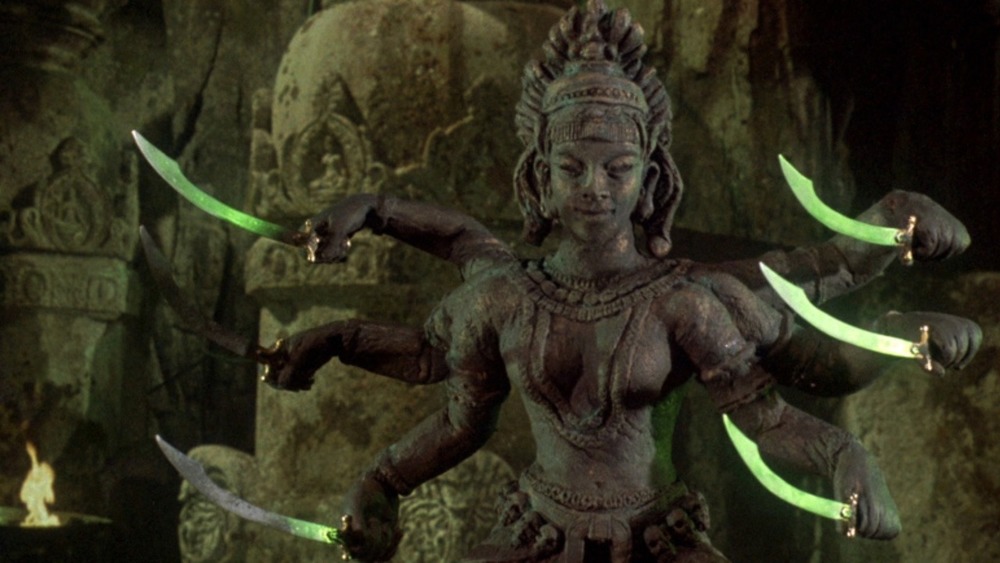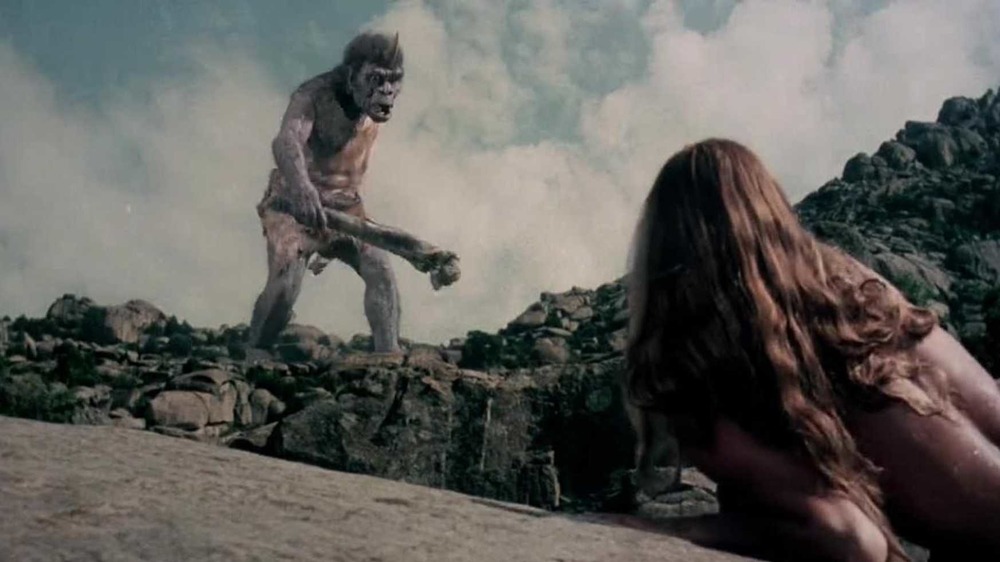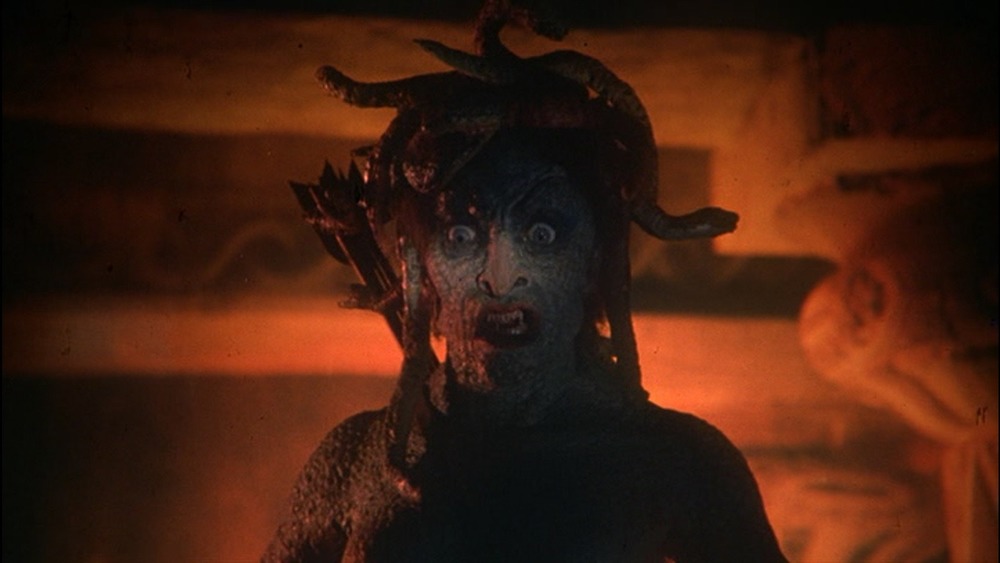Ray Harryhausen's Best Special Effects
If you've ever thrilled to the cinematic sight of an alien invasion, a giant monster rampaging through a city, or some fantastic, impossible creature doing battle with an intrepid hero, you can thank Ray Harryhausen. One of Hollywood's greatest effects wizards, Harryhausen grew up experimenting with stop-motion in a makeshift studio in his parents garage. The future legend then had the good fortune of meeting his idol, Willis O'Brien of The Lost World and King Kong fame. The encounter inspired Harryhausen to enroll in the University of Southern California, where he honed his skills and began developing a technique that would come to fruition years later.
Harryhausen would call this technique "Dynamation," by which animated models would appear to interact with live-action characters and backgrounds. Harryhausen toiled away on several short films throughout the '40s, but by the end of that decade, O'Brien would call him up to the big leagues, launching a storied career. Harryhausen is responsible for some of sci-fi and horror's greatest claymation monsters, and many of his effects still hold up for modern audiences. So today, we're honoring this father of modern visual effects by taking a look at Ray Harryhausen's greatest cinematic achievements.
Mighty Joe Young put Ray Harryhausen on the map
Ray Harryhausen's experimental short film, Evolution, prompted Willis O'Brien to hire the young animator to work alongside the team responsible for 1933's King Kong on a new feature — 1949's Mighty Joe Young. It's the story of a not-quite-Kong-sized giant gorilla whose handler, a girl named Jill Young, is convinced to bring him to Hollywood from Africa for a shot at fame and fortune. In the years since Harryhausen had first become obsessed with King Kong, he'd vacuumed up all of the knowledge he possibly could about the principles of stop-motion and how to construct detailed, lifelike models. And his fanatical dedication to the craft shone through on Mighty Joe Young, which represented a significant technical leap over Kong.
O'Brien was credited as the lead animator on the film, but according to Turner Classic Movies, it was Harryhausen — then only in his late 20s — who did 80 percent of the animation on Mighty Joe Young, with the rest being farmed out to assistant animators. The young artist incorporated several of the techniques he'd been experimenting with during his teen years, including split-screen and rear-projection shots, to allow his mighty gorilla to interact with the film's actors. Mighty Joe Young won the 1950 Academy Award for Best Special Effects, an audacious start to the career of Harryhausen, who suddenly found his name on the radar of virtually every major studio.
The Beast from 20,000 Fathoms is a masterpiece of special effects
See if this sounds familiar. In a remote area of the sea, an underwater nuclear test awakens a giant, prehistoric monster. Even as it begins making its way along the coast, wreaking destruction in its wake, witnesses to this monstrosity are laughed at ... until the creature makes landfall, devastating a major city and beating back the military with its breath of nuclear fire. Things look grim until a novel solution is devised to stop the monster and save the populace.
If this sounds like the plot of the 1954 Japanese classic Godzilla, well, it is, but the makers of that film were inspired (heavily inspired, one might say) by 1953's The Beast from 20,000 Fathoms, a jaw-dropping showcase for Ray Harryhausen's detailed models and ingeniously staged monster attacks. While some critics of the time weren't blown away by the flick's story, none could deny its visual impact, as it was simply unlike anything that had been seen onscreen at the time.
In a write-up for trade magazine Variety, legendary critic and Hollywood journalist Hy Hollinger wrote, "Producers have created a prehistoric monster that'll make Kong seem like a chimpanzee. ... The sight of a beast stalking through Gotham's downtown streets is awesome." Hollinger would then go on to say, "Special credit should go to Ray Harryhausen for the socko technical effects, including the beast itself and the destruction of buildings as the monster causes a serious panic in lower Manhattan."
It Came from Beneath the Sea is impressive despite a major error
After the success of The Beast from 20,000 Fathoms, it didn't take Ray Harryhausen long to secure his next gig. This time, it was a film specifically created to highlight his visual effects — 1955's It Came from Beneath the Sea, in which yet another ill-advised nuclear test has unexpected and undesirable side effects. Rather than a prehistoric monster, though, the It in question is a king-sized octopus, made radioactive, aggressive, and hungry by a hydrogen bomb explosion in the Philippine Trench.
While the flick's story is pretty rote — "giant monster attacks San Francisco" pretty much encapsulates it — Harryhausen's innovative effects work made moviegoers' eyes pop out of their heads, despite the fact that there's a pretty glaring flaw in his creation. Due to pressure from the studio to keep the budget down, Harryhausen's octopus has only six tentacles. According to Turner Classic Movies, he papered over the omission by keeping one tentacle moving at all times, correctly guessing that audiences' eyes would be drawn to whatever was in motion, and positioning his creature so that the missing two tentacles could plausibly be assumed to be below the water line.
Earth vs. the Flying Saucers was mind-blowing in the 1950s
If you were blown away by Independence Day in 1996, then you have some idea of how moviegoers responded four decades earlier to 1956's Earth vs. the Flying Saucers, which utilized Ray Harryhausen's stop-motion wizardry to portray scenes of destruction that were absolutely shocking to '50s audiences. While there was some traditional model work on display, Harryhausen mostly animated the saucers themselves, not to mention the tumbling bricks as the UFOs blasted and crashed into iconic Washington D.C. landmarks like the Capitol dome and the Washington Monument.
As you might assume, the animator's special effects were widely regarded to be the movie's main attraction. According to Variety's review, "[Earth vs. the Flying Saucers] does a satisfactory job of entertaining in the science fiction class. The technical effects created by Ray Harryhausen come off excellently ... adding the required out-of-this-world visual touch to the screenplay." While it might seem a little quaint to modern eyes, try watching the film through a 1950s lens, and we guarantee you'll be blown away by the sci-fi spectacle.
Ray Harryhausen brought an alien creature to life in 20 Million Miles to Earth
Ray Harryhausen had conceived 20 Million Miles to Earth in 1952 while on a vacation to Italy, but he had to get a few hits under his belt — and commission a revision of his own screenplay from his friend Charlott Knight, an actress and writer of several shorts based on popular fairytales — before he could get the green light. Producer Charles Schneer, having employed Harryhausen on some of Columbia Pictures' biggest sci-fi hits, didn't hesitate to get it into production once he was confident the budget could be managed, according to Turner Classic Movies.
The resulting story involved a manned mission to Venus that came back with a sample of a lifeform, which simply starts off as an amorphous blob. But as it begins to grow, it takes on a bipedal, monstrous form. And as it continues growing, it becomes obvious that it's going to be a problem.
Harryhausen put the beast (at roughly human size) in the same frame with human actors, a remarkable achievement at the time. And at the film's climax, he pitted the now-giant creature against an elephant in the streets of Rome. It was eye-popping spectacle to be sure, but it's also noteworthy that Harryhausen's models were his most detailed to date, lending a degree of personality to his alien monster that helped audiences to see it as more than a mindless agent of destruction.
The 7th Voyage of Sinbad is a special effects extravaganza
It all came together for Harryhausen on 1958's The 7th Voyage of Sinbad, his first color feature and the first to actually advertise his process as "Dynamation." Having grown a bit weary of creating giant monsters to destroy his favorite cities, the animator decided to take on the mythological figure of Sinbad the sailor, which allowed for him to bring all sorts of fantastic creations to life, according to Turner Classic Movies.
The plot involves a quest by the titular character to retrieve a special ingredient that will reverse a magic spell cast upon a princess, but it's pretty much just a loose framework upon which Harryhausen and screenwriter Kenneth Kolb hung one jaw-dropping action sequence after another. A giant Cyclops, a fearsome Roc, and a giant dragon are all part of the proceedings, but the pièce de résistance is an extended sword fight between Sinbad and a reanimated skeleton, a degree of close-quarters interaction between animated creation and actor that blew audiences away.
Thanks to these incredible sequences, Variety wrote in a glowing review, "This isn't the sort of film in which performances matter much. It's primarily entertainment for the eye, and the action moves swiftly and almost without interruption. Ray Harryhausen, who was responsible for visual effects, emerges as the hero of this piece."
Mysterious Island pits human actors against stop-motion monsters
As Ray Harryhausen progressed with his career, he was more and more inspired by literary works. For proof, see 1961's Mysterious Island, which was based on the 1875 novel by sci-fi pioneer Jules Verne.
In the story, a group of Union prisoners during the Civil War commandeer an airship and crash land on a, well, mysterious island, where it quickly becomes apparent that the local fauna are a bit different from any known place on Earth. Humongous crabs, birds, squid, and bees all make appearances, while the intrepid castaways try to uncover the identity of a shadowy figure lurking on the island — one who might be either friend or foe.
Harryhausen was really flexing his muscles with this picture. His fantastic, detailed model work was a sight to behold, and while the sight of a gaggle of actors superimposed over a stop-motion animated creature might elicit chuckles today, it was simply astonishing to audiences of the time.
Jason and the Argonauts features Ray Harryhausen's most famous moment
Ray Harryhausen's first dip into the waters of Greek mythology came with 1963's Jason and the Argonauts. Here, the animator was given his biggest budget yet. According to The Guardian, the flick cost $3 million to produce, which was virtually unheard of at the time. Of course, it all majorly paid off, as Harryhausen put every dollar up on the screen, reaching new levels of intricacy with his fantastic models, such as the multi-headed Hydra and Talos, a giant metal statue that comes to life and menaces Jason and his men.
The centerpiece of the film, though, is an all-out brawl between Jason and a whole phalanx of sword-wielding skeletons. According to the Los Angeles Times, Harryhausen revealed that the sequence was shot on location in Greece using stunt performers. He and his staff then spent nearly five months working on it in post, a significant portion of the movie's lengthy two-year post-production period. Sure, the Hydra is an impressively detailed model, and the sequence featuring the beast might've been the highlight of another film, but Jason and the Argonauts' skeleton fight has become the stuff of legend, as well as one of Harryhausen's most fondly remembered set pieces.
The special effects in One Million Years B.C. deserve way more attention
Released in 1966, One Million Years B.C. might've been Ray Harryhausen's all-around most accomplished work to date, but his brilliant creations for the film were very nearly overshadowed by one publicity still. Of course, said still featured the drop-dead gorgeous Raquel Welch, who played a minor role in the movie, in a fur bikini. It was an image that instantly rocketed her to stardom, and it's resurfaced again and again in pop culture to a degree that nobody involved ever could've envisioned. So perhaps it's understandable that she gets more attention than Harryhausen's effects work. But for the movie, a remake of a far less technically accomplished 1940 feature, Harryhausen created the most convincing dinosaurs audiences had yet seen onscreen (or would see for years after).
According to TV Guide, the master animator's squad of dinos included everything from a "giant sea turtle" to a Brontosaurus, as well as an Allosaurus, Ceratosaurus, and Triceratops. Plus, there was an actual iguana made to look like a giant — a tip of the hat to the technique utilized in the 1940 original. Of course, the film was the exact opposite of historically accurate. Dinosaurs had long since gone extinct by 1 million B.C., they didn't co-exist with humans, and it's highly doubtful that our prehistoric forebears, as the flick's marketing materials suggested, invented history's first bikini. But Harryhausen's effects could always be counted on to steal the show, and even competition from a scantily clad Welch couldn't keep them from doing so again.
The Golden Voyage of Sinbad brought a terrifying statue to life
As the 1960s wore down, so did the career of Ray Harryhausen, who fielded only two features during the '70s. As it turns out, both were sequels to one of his greatest works, The 7th Voyage of Sinbad. The second installment in the trilogy, 1973's The Golden Voyage of Sinbad, continued the story of the mythological sailor, and while it featured expertly animated renditions of plenty of fanciful creatures such as griffins and centaurs, it's best remembered for one of Harryhausen's most masterful set pieces.
Incorporating different elements from his work on The 7th Voyage of Sinbad and Jason and the Argonauts, the great animator put together a lengthy sequence in which a towering stone statue of Kali — a six-armed Hindu goddess — comes to life, wielding six blades against a group of terrified opponents. The sequence featured some of Harryhausen's smoothest animation ever, not to mention near-seamless integration of the stomping, slashing behemoth with its live-action counterparts. In other words, it was the fullest realization yet of the promise of "Dynamation." But the '70s were ushering in a new generation of special effects artists with a whole new set of modern tools at their disposal, and within a decade, stop-motion would become all but obsolete.
Sinbad and the Eye of the Tiger had to compete against Star Wars
Sinbad and the Eye of the Tiger was released in 1977 ... the same year as a little film called Star Wars. Lucasfilm's renderings of fantastic creatures large and small put virtually every work of sci-fi and fantasy that had come before it to shame. Objectively, though, Harryhausen's work on the Sinbad threequel was no less impressive than longtime fans had come to expect, with stunning models of a giant horned troglodyte, some truly freaky-looking hornet people, and a ferocious saber-toothed tiger, all lovingly animated and taking center stage.
Strangely enough, Eye of the Tiger had a single connection to the film that changed Hollywood visual effects forever. According to Turner Classic Movies, Peter Mayhew was among its supporting cast, and he was also the same guy who portrayed Chewbacca in Star Wars. But curiously, as assured as its stop-motion creatures were, Sinbad and the Eye of the Tiger was missing the kind of jaw-dropping centerpiece for which Harryhausen had become famous. Still, take the film as a whole, and you'll find an entire smorgasbord of monsters to enjoy.
Clash of the Titans might be Ray Harryhausen's finest film
Ray Harryhausen's final film, 1981's Clash of the Titans is one of the most memorable fantasy films of all time. It tells the story of heroic Perseus (Harry Hamlin), the grandson of Zeus, and his quest to save the beautiful princess Andromeda (Judi Bowker) from the machinations of the evil Calibos (Neil McCarthy) and his eventual sacrifice to the fearsome sea monster known as the Kraken. Harryhausen pulled out all the stops for the film, bringing such mythological creatures as the winged Pegasus, the hideous Medusa (with a head full of writhing snakes for hair), and the Kraken itself to vivid life.
Released the same weekend as runaway smash Raiders of the Lost Ark, Clash of the Titans still managed to clean up at the box office. Internationally, it was the 12th highest-grossing film of a year that also included such hits as Superman II, An American Werewolf in London, and the James Bond film For Your Eyes Only. In his glowing review of the film, legendary critic Roger Ebert praised the film as "a grand and glorious romantic adventure," and he made sure to give credit where it was due.
"The real star of the movie ... is Ray Harryhausen, who has worked more than 40 years as a creator of special effects," Ebert wrote. "He uses combinations of animation, miniatures, optical tricks, and multiple images to put humans into the same movie frames as the most fantastical creatures of legend. ... Clash of the Titans is his masterwork."
